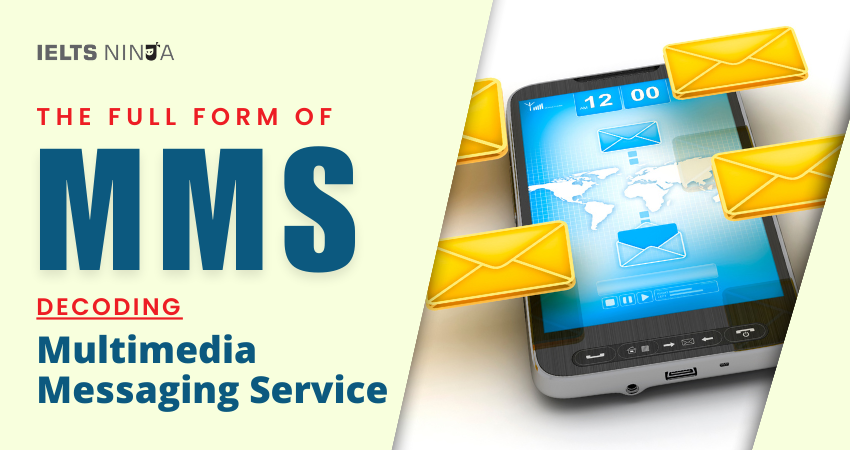In the realm of telecommunications and mobile technology, the full form of “MMS” stands for “Multimedia Messaging Service.” MMS is a messaging service that allows users to send multimedia content, such as pictures, videos, audio clips, and text, from one mobile device to another. In this comprehensive guide, we will explore the details of MMS, how it works, its significance in mobile communication, and its evolution alongside SMS (Short Message Service).
What is MMS?
Multimedia Messaging Service (MMS) is a messaging technology that extends the capabilities of traditional text-based messaging (SMS) by enabling the exchange of multimedia content. MMS messages can include images, videos, audio recordings, contact cards, and text, allowing users to convey information in a more dynamic and engaging manner.
Key Aspects of MMS
Multimedia Content:
MMS allows users to send and receive a wide range of multimedia content, including:
- Images: Users can send photographs or graphics to illustrate a point or share moments.
- Videos: Short video clips can be shared for entertainment, instructional, or communication purposes.
- Audio Clips: MMS supports the sharing of voice recordings and audio messages.
- Text: Users can include text alongside multimedia content to provide context or captions.
Cross-Platform Compatibility:
MMS messages are designed to be cross-platform, meaning that users on different mobile devices and networks can exchange multimedia messages seamlessly. This universality makes MMS a versatile communication tool.
Mobile Networks:
MMS messages are transmitted over mobile networks, similar to SMS. Users need an active mobile data or Wi-Fi connection to send and receive MMS messages.
Attachment Size:
The size of multimedia attachments in MMS messages can vary depending on the network and device capabilities. Some networks and devices may have limitations on attachment size, requiring users to compress or resize content.
Group Messaging:
MMS allows users to send multimedia messages to multiple recipients simultaneously, making it suitable for group chats and sharing experiences with friends and family.
Storage and Retention:
MMS messages are typically stored on the recipient’s device, allowing them to view the multimedia content at their convenience. The retention period of MMS messages may vary based on device settings.
Evolution and Integration:
MMS has evolved over the years to adapt to changing technologies and user preferences. Many messaging apps and mobile devices seamlessly integrate MMS with other messaging services, offering a unified communication experience.
Also Read: Best online IELTS coaching & training academy
Significance of MMS
Multimedia Messaging Service (MMS) holds significance in mobile communication for several reasons:
- Enhanced Communication: MMS enables users to convey information, emotions, and experiences more effectively through multimedia content.
- Visual Storytelling: Users can share visual stories, travel experiences, and special moments through images and videos, enhancing communication.
- Business and Marketing: MMS is used by businesses for marketing campaigns, promotions, and customer engagement, leveraging multimedia content to capture attention.
- Social Interaction: MMS plays a role in social interaction, allowing friends and family to share life updates and stay connected visually.
- Education and Training: Educational institutions and organizations use MMS for instructional purposes, sharing multimedia content like tutorials and training materials.
- Entertainment: MMS contributes to entertainment through the sharing of memes, GIFs, and short video clips, adding fun to conversations.
Conclusion
Multimedia Messaging Service (MMS) has become an integral part of mobile communication, offering users the ability to share multimedia content and engage in dynamic conversations. As mobile devices and networks continue to advance, MMS remains a valuable tool for personal communication, business engagement, and the exchange of visual information in the digital age.








